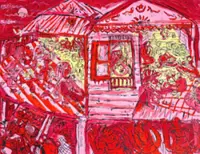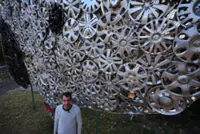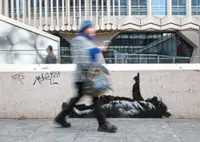Wong Chee Meng’s 'Love And Happiness' (acrylic on canvas, 2022). Photo: Wei-Ling Gallery
There is a little bit of Dutch painter Vincent van Gogh’s The Starry Night peeking through the artworks currently on display at Wei-Ling Gallery in Kuala Lumpur for the A Paradigm Shift - Reflection On Twenty Years Of The Malaysian Art Scene group exhibition.
Specifically, you see it in Chen Wei Meng’s Arrivals, a landscape painting that combines four iconic artworks in a scene filled with swirling clouds, majestic mountains and the mystery of the night sky.





